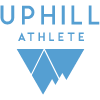Key…rTSS is based on paces you enter for second threshold (AnT, or one-hour pace). It computes based on how fast you ran, not your HR. It attempts to adjust for hills, but doesn’t do a great job. It will underestimate your effort for a hilly route. Advice on here is to add 10 points for every 1000ft of vert your route had.
Say your (flat course) run was done at 80% of threshold, for one hour. Say, you ran 10:00 pace, off a threshold pace of 8:00. Your rTSS is .80^2, times one hour. Drop the decimals.
.80^2 = 0.64, or rTSS = 64. If you ran that for two hours, it’s 64×2 = 128.
That figure, 64 or 128, is a measure of total training stimulus, or fatigue. The number doesn’t mean a lot for any one workout, but is a robust measure over weeks of daily averages.
I’ve got my 6-week moving average up to 80, and am pushing to get it over 90 for a couple months prior to Leadville. That is roughly the equivalent of 10 hours a week at at least 80% of threshold.
